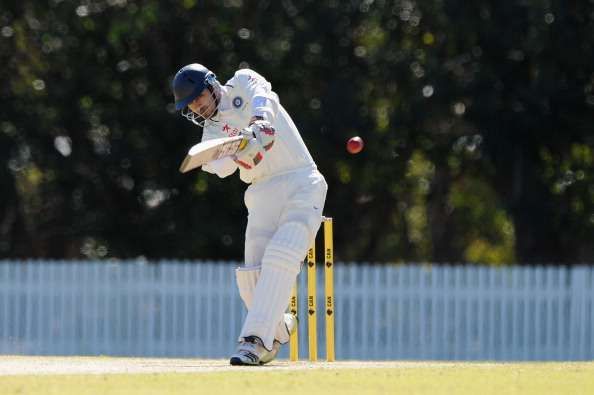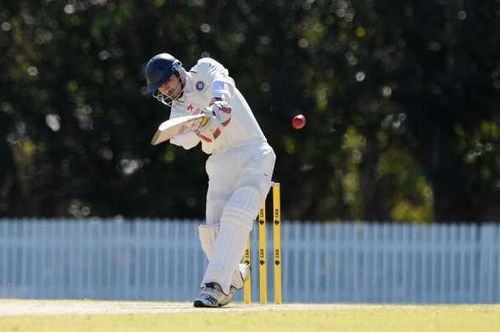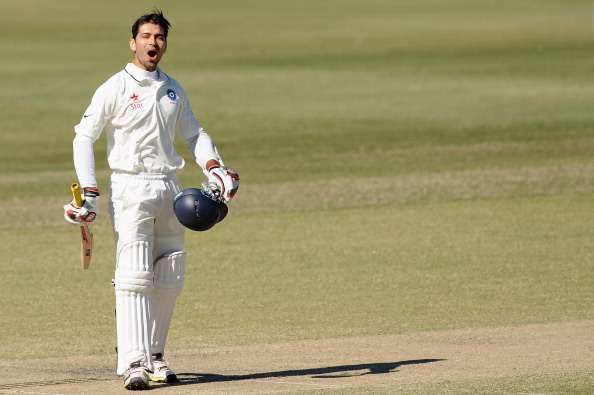
Naman Ojha: The unluckiest Indian wicketkeeper in recent times

Naman Ojha played a lone hand and battled for long periods trying to delay the inevitable in the recently concluded Ranji Trophy semi-final.
The writing was on the wall, and Mumbai eventually made it through to the final and won the trophy.
But Madhya Pradesh’s wicket-keeper and No.4 batsman top-scored for them in both innings of the semi-final with 79 and 113.
He had also scored two half-centuries to help his team win the quarter-final against Bengal. Agewise, he is on the wrong side of 30, and time is running out on him.
But he, along with Wriddhiman Saha, Parthiv Patel, and Dinesh Karthik are culpable for being contemporaries to MS Dhoni, probably and arguably India’s greatest short-format captain and their best wicket-keeper batsman.
For 10 years, MS Dhoni was a certainty in all three formats, which meant there were very few chances for all three. While the other three still got their fair share of chances, Ojha still waits for an extended run and 2016 may well be his year.
Early start
Ojha, like Parthiv Patel, entered the big league of cricket very young, having debuted for Madhya Pradesh way back in 2000/01. That is 16 years ago and he is still just 32.
That is a lot of domestic cricket for someone who has played just 1 Test, 1 ODI and 2 T20Is, the latter two coming on a tour to Zimbabwe way back in 2010. He hasn’t donned the blue jersey since.
It took almost six to seven years for Ojha to really settle down into cricket and it is ironical that his first claim to fame and shot at spotlight was in the second season of the IPL, when he scored a half-century for the Rajasthan Royals.
He moulded himself into a more consistent wicket-keeper batsman playing for Sunrisers Hyderabad, and suddenly big runs started to flow even in the domestic circuit.
Despite being there on the fringes, Ojha never really was part of selection discussions until his late 20s when he blossomed at all levels. Swashbuckling innings in the IPL and some good knocks in the domestic season showed that he was not a one-trick pony.
The transition
Ojha’s big Ranji season came in 2013/14 when he finished with 835 runs at an average close to 70 having played just 7 games. He continued his happy domestic spree with 557 runs in just 6 matches at 69.62 in the subsequent Ranji season.
Ojha had a relatively quiet year by his standards in 2015/16, but he still managed 645 runs at 46.
However, he is now India’s reserve wicketkeeper behind Wriddhiman Saha, who is picked ahead of him not so much for batting exploits but for his keeping dexterity, reaping the benefits of being India’s reserve keeper behind Dhoni for more than half a decade.
Ojha made his debut in the third Test of the series in Sri Lanka last year, giving a good account of himself when Saha was ruled out because of an injury.

The game-changer
Ojha’s real transition as a serious contender for the national spot took shape during the India A’s tour to Australia in 2014, when he scored a 250-ball unbeaten 219, a knock that made people sit up and notice, especially for the way he managed to explode while batting with the lower order.
That was not the only innings of eminence on the tour. Ojha made that tour his own with scores of 219*, 101* and 110 – the kind of tour that almost always comes with a call-up.
He followed those scores up with another double in the Duleep Trophy and it had become impossible to ignore him anymore. He had played attacking innings as well as match-saving innings on that tour against the likes of James Faulkner and Mitchell Marsh.
In Ojha’s case, this exposure helped his keeping too as India internationals Saba Karim and Deep Dasgupta noticed over the last couple of years. Both were impressed with his keeping skills to go with his confident approach to batting.
Stats
Ojha has seen many a player start after him and zoom ahead, a good example being Jasprit Bumrah, who is now a certainty in the starting XI, a bowler who had made his name like Ojha in the 2014 India A tour to Australia.
Ojha has had a very long first-class career and his numbers reflect that. He has 8536 runs at 43.77 with 69 50+ scores, one every four innings.
He also has more than 400 dismissals to his credit – making him a valuable wicketkeeper and is a top-order batsman for Madhya Pradesh.
He also has more than 2000 runs in domestic T20s at 21 and a strike-rate of 120.69. He averages above 30 in all List A matches, although that is a shade low compared to his exploits in the last five years.
Conclusion
While Ojha remains nonplussed about his chances to play in the team, one would hope he gets to wear the India crest a few more times before he hangs his boots.
Saha is enjoying his dividends after years of waiting but given that he hasn’t exactly set the bells ringing with his batting, Ojha is not completely out of contention for a Test wicketkeeping spot.
In the ODI side, Ojha has a better chance compared to Saha, once Dhoni decides to call it a day, with speculations rife about that event happening sometime this year.
Sanju Samson is waiting in the wings too and it remains to be seen if the selectors will reward Ojha’s perseverance over Samson’s enterprise.
If they pick the latter, it would almost be tragic for one of the best domestic wicketkeepers in India and also probably one of the unluckiest.